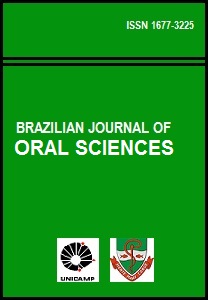Abstract
Aim: The purpose of this study was to evaluate the effect of 10% carbamide peroxide (10%CP) bleaching agents with different fluoride concentrations on enamel microhardness after induction of artificial caries lesions during pH-cycling model. Methods: Bovine dental enamel blocks with known surface microhardness were subjected to caries lesion induction and another surface microhardness was determined after a demineralization protocol. The enamel blocks were divided into four groups (n=17) and subjected to 12-day pH-cycling. The groups consisted of the following treatments: 1) artificial saliva (control group not subjected to bleaching treatment); 2) 10%CP; 3) 10%CP (with 0.11% fluoride); 4) 10%CP (with 0.5% fluoride). After treatments, the enamel was evaluated using surface microhardness, polarized light microscopy (PLM) and scanning electronic microscopy. The percentage of surface microhardness recovery was determined for each group and analyzed by the Kruskal Wallis and Dunn’s tests (a=0.05). The values of lesion depth by PLM were analyzed by ANOVA and Tukey’s test (a=0.05). Results: The enamel treated with bleaching gels containing or not fluoride presented lower mineral recovery and higher caries lesion depth than the control group. Conclusions: These data suggest that bleaching procedures on enamel with artificially induced caries lesions should be used with caution even in the presence of fluoride because there was no recovery in the microhardness.The Brazilian Journal of Oral Sciences uses the Creative Commons license (CC), thus preserving the integrity of the articles in an open access environment.
Downloads
Download data is not yet available.

